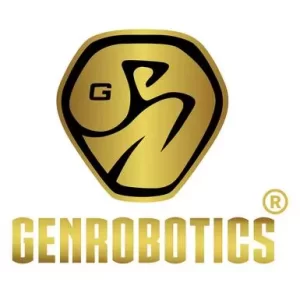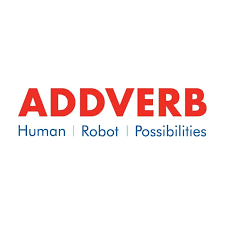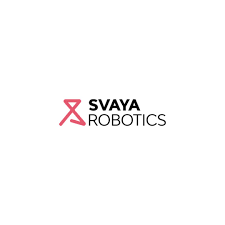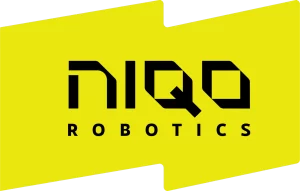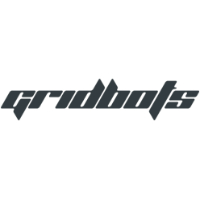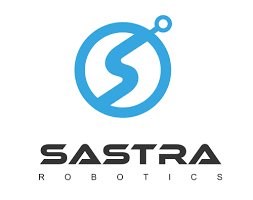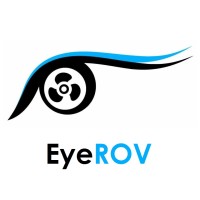Microelectronics world news
BluGlass secures first order for alpha prototype blue GaN DFB lasers
More gated 555 astable multivibrators hit the ground running

Adding the long-first-pulse malady in less traditional 555 astable topologies including CMOS- and bipolar-based oscillators that generate 50:50 symmetrical square waves.
A previous Design Idea, “Gated 555 astable hits the ground running” offered a fix for the problem of the excessively long first pulse that’s generated by traditional topology 555 astable circuits on start up when gated by the RESET pin from oscillation-off to oscillation-on. See Figure 1 and Figure 2.

Figure 1 The problem—the first oscillation cycle has a too-long first pulse on start-up, when gated by the RESET pin from oscillation-off to oscillation-on.
Wow the engineering world with your unique design: Design Ideas Submission Guide

Figure 2 The fix via C2 charge injection on oscillation startup to equalize pulse length.
However, unaddressed in this design idea is the fact that less traditional 555 astable topologies also suffer from the same long-first-pulse malady. Important examples of such circuits are oscillators that generate 50:50 symmetrical square waves, such as Figure 3.

Figure 3 The long first-pulse problem also occurs in a 50:50 square wave topology popular for CMOS 555s.
Happily, the same fix from “Gated 555 astable hits the ground running” works in this genre of oscillators too, as illustrated in Figure 4.

Figure 4 C2 charge injection fix applied to CMOS 50:50 square wave oscillator.
So, the problem is solved for CMOS 555 square wave generators. But what about their bipolar kin?
Despite their age, bipolar 555s still get designed into contemporary applications. The reasons for the choice include advantages like higher supply voltage rating (18 V vs 15 V) and greater output current capability (hundreds vs tens of mA) than CMOS types. But they do need to be wired up somewhat differently—for example with an extra resistor (as described in a previous Design Idea “Add one resistor to give bipolar LM555 oscillator a 50:50 duty cycle“)—when a 50:50 square wave output is required. See Figure 5.

Figure 5 Bipolar 555 in gated 50:50 square wave configuration.
The C2 charge injection trick will still work to correct Figure 5’s first pulse, but there’s a complication. When held reset, Figure 5’s circuit doesn’t discharge the timing capacitor all the way to zero, but only to Vz where:
Vz = R3(R2 + R3)-1 V+
= 0.184 V+
Therefore, our old friend C2 = C1/2 won’t work. What’s needed is a smaller charge injection from a smaller C2 = 0.175 C1 as Figure 6 shows.

Figure 6 C2 charge injection first-pulse fix modified for bipolar 555 square wave generation.
Stephen Woodward’s relationship with EDN’s DI column goes back quite a long way. Over 100 submissions have been accepted since his first contribution back in 1974.
Related Content
- Gated 555 astable hits the ground running
- Add one resistor to give bipolar LM555 oscillator a 50:50 duty cycle
- 555 triangle generator with adjustable frequency, waveshape, and amplitude; and more!
- The NE555 current spike
The post More gated 555 astable multivibrators hit the ground running appeared first on EDN.
SK Siltron CSS to supply silicon carbide wafers to Infineon
TI Simplifies ADAS and EV Designs With One-Chip Sensing and Power Solutions
TI Simplifies ADAS Designs With One-Chip Sensing and Power Solutions
Top 10 Data Science Companies in India – ELE Times
In the ever-evolving landscape of data science, professionals seek platforms that not only offer jobs but also opportunities to apply skills meaningfully and contribute to groundbreaking innovations. As industries recognize the transformative power of data analytics, certain companies actively create environments empowering data scientists. Here’s a curated list of top companies offering exciting opportunities for data scientists:
1. Accenture: Pioneering Data-Driven Innovation
Accenture leads in data-driven solutions, embracing cutting-edge technologies like machine learning and artificial intelligence. The Accenture Analytics division, powered by predictive analytics technology, offers an enriching experience for data analysts. Joining Accenture means becoming part of a global network comprising data scientists and analysts, contributing to transformative projects in spaces like Accenture Innovation Centers and Accenture Labs.
2. Fractal Analytics: Shaping Tomorrow’s Analytics
Established in 2000, Fractal Analytics is a leading analytics service provider with Fortune 500 clients in technology, insurance, and retail. Fostering a culture of innovation, Fractal encourages data scientists to craft bespoke analytics strategies. For those seeking a workplace where innovation is at the heart, Fractal Analytics provides an exciting and forward-looking journey.
3. Swiggy: Data-Driven Excellence in Food Delivery
As India’s premier convenience commerce platform, Swiggy is a leader in food delivery and is rapidly expanding its technology teams. With a tech-first approach to logistics and a solution-first attitude, Swiggy relies on robust machine learning technology, processing gigabytes of data daily. Joining Swiggy means contributing to the transformation of customer experiences through quick, easy, and dependable delivery services.
4. LatentView Analytics: Strategic Insights for Global Clients
LatentView Analytics challenges data scientists to approach projects with a comprehensive, 360-degree view. Assisting clients in making informed investment decisions, predicting revenue sources, and anticipating product trends, LatentView Analytics provides an intellectually stimulating environment.
5. Tiger Analytics: Unleashing the Power of Data
Established in 2011 and headquartered in the USA, Tiger Analytics is a top data analytics company offering diverse analysis options. With partnerships with industry giants, Tiger Analytics swiftly became a preferred destination for organizations seeking comprehensive data solutions.
6. Genpact: Nurturing Data Science Excellence
Genpact operates with a vast team of data scientists under a centralized hub model, emphasizing enhancing the client experience. Initiatives like the Machine Learning Incubator underscore the company’s commitment to cultivating undervalued data scientists into highly skilled professionals.
7. TheMathCompany: Multinational Excellence in Data Analytics
Collaborating with Fortune 500 companies, TheMathCompany enhances analytics capabilities using a cutting-edge platform. For data scientists seeking impactful projects, TheMathCompany offers a global stage.
8. Mu Sigma: Leading in Decision Science and Analytics Solutions
Based in Chicago, Mu Sigma is a leading provider of decision science and analytics solutions. With a global presence, Mu Sigma invites data scientists to shape decision science through data analysis and improvement.
9. IBM: A Century of Global Technology Solutions
A stalwart since 1911, IBM delivers consulting and global technology solutions worldwide. For data scientists wanting to gather, integrate, and manage substantial amounts of data, IBM India offers a legacy of innovation.
10. Oracle: Pioneering IT Services and Data Analytics
Founded in 1977, Oracle is a renowned IT company offering software, IT services, and data analytics. Utilizing machine learning, Oracle’s data analytics program assists firms in making data-driven decisions. Oracle is poised to rank among the largest data analytics companies globally.
In conclusion, these ten companies represent the pinnacle of opportunities for data scientists, each offering a unique environment and challenges to propel careers forward. Whether interested in pioneering research, impactful collaborations, or contributing to industry transformation, these companies provide diverse avenues in the dynamic field of data science.
The post Top 10 Data Science Companies in India – ELE Times appeared first on ELE Times.
Honeywell’s Game-Changing Partnership: Upgrading Commercial Buildings with Smart Connectivity, No Rewiring Needed
In a groundbreaking announcement at CES 2024, Honeywell revealed a strategic Memorandum of Understanding to revolutionize commercial building digitization. The partnership, formed with Analog Devices, Inc. (ADI), aims to explore the integration of digital connectivity technologies into existing infrastructure, eliminating the need for rewiring and offering cost-effective solutions for building management systems.
The move comes as a response to the challenges posed by outdated and inefficient commercial buildings in the United States, with a majority constructed before the year 2000. According to the U.S. Energy Information Administration (EIA), these structures contribute to increased energy consumption and lack the technological advancements required for efficient data transmission.
The collaboration with ADI introduces new technology to building management systems, allowing real-time decision-making for energy consumption reduction. By leveraging ADI’s single-pair Ethernet (T1L) and software configurable input/output (SWIO) solutions, Honeywell aims to provide a seamless upgrade to building networks without significant upfront investments or extensive remodelling.
Martin Cotter, Senior Vice President of Industrial and Multi Markets and President of ADI EMEA region, expressed excitement about expanding ADI technologies into building management systems. He emphasized the potential for reducing energy consumption, saving costs, improving resiliency, and meeting emissions reduction goals.
Suresh Venkatarayalu, Honeywell’s Chief Technology Officer, highlighted the revolutionary nature of the collaboration, stating that it offers building owners the ability to enhance their wiring infrastructure with minimal upfront investment, reduced labour, and environmental impact.
ADI’s single-pair Ethernet technology enables long-reach Ethernet connectivity, utilizing existing building wiring to reduce installation time and costs. This solution complements existing Ethernet connectivity in building management systems, fostering enhanced connectivity from the edge to the cloud and optimizing asset utilization.
Moreover, ADI’s solutions simplify product complexities, allowing Honeywell to build a single version of the product adaptable to various needs. This approach facilitates future-proofed control and automation, accommodating building renovations or changing requirements.
Honeywell’s move towards adopting ADI’s innovative technologies marks a significant step in addressing the challenges faced by commercial buildings, offering a pathway to smart, efficient, and cost-effective digitization without the need for extensive overhauls.
The post Honeywell’s Game-Changing Partnership: Upgrading Commercial Buildings with Smart Connectivity, No Rewiring Needed appeared first on ELE Times.
Luminus to bring Sanan’s SiC and GaN power semiconductors to Americas market
CES 2024: Creating a frugal code in embedded software

At CES 2024, a French startup is presenting the notion of frugal code in embedded software by identifying and quantifying the optimization potential of the code. WedoLow, a spinoff from three research laboratories—IETR, INSA, and Inria in Rennes, France—will demonstrate how its automated software solution works for automotive applications ranging from advanced driver assistance systems (ADAS) to autonomous driving (AD) to in-vehicle infotainment systems.
WedoLow claims that its solution addresses complexity in embedded software by diagnosing and checking the code rapidly throughout the development process. That’s how it ensures if the code is fully optimized and if gains can be obtained in terms of speed of execution or energy consumption.

Source: WedoLow
Complexification of code in embedded software
At a time when applications are becoming larger and codes increasingly voluminous and complex, embedded systems are obviously no exception. That inevitably complexifies the work of developers, who now face a growing risk of delays with consequences for the efficiency and performance of their applications.
According to a 2020 survey from Sourcegraph, 51% of developers say they have more than 100 times the volume of code they had 10 years ago. Furthermore, 92% of developers say the pressure to release software faster has increased.
Take the case of the automotive industry, where cars have 200 million lines of code today and are expected to have 650 million by 2025. According to a McKinsey report titled “Outlook on the automotive software and electronics market through 2030,” the automotive software market is already worth more than 31 billion dollars and is forecast to reach around 80 billion in 2030.
The use of embedded software in the automotive sector has been constantly increasing since the introduction of anti-lock braking system (ABS) more than 40 years ago. So, gains in embedded software’s speed of execution and energy consumption will result in more responsive systems and longer battery life, which are crucial aspects for electric and autonomous mobilities.
How software works
WedoLow claims that its beLow software suite enables developers to understand the structure of a code and identify the parts that can be rewritten to generate more efficiency and performance. It’s enabled by optimization techniques that identify and quantify the potential optimization of the code at any stage of its development.
They build a line-by-line or function-by-function optimization strategy and obtain an optimized code rapidly and automatically. For example, WedoLow quotes a 23% gain in execution speed on the filtering of signals emitted by sensors on a road vehicle transmission system. Next, it helped achieve a 95% gain in execution speed on the processing of data and filtering of signals emitted by different sensors in battery management system (BMS) software.
Besides embedded software, WedoLow also aims to address the hosted software segment for server and cloud applications. Here, the French upstart conducted a test with an aerospace group on the processing of satellite images, reducing the software’s energy consumption by 18%.
WedoLow is presenting its frugal code solution at CES 2024; product launch is scheduled in the second quarter of 2024.
Related Content
- Embedded Basics
- All Things Embedded
- 8 pillars of embedded software
- Programming embedded systems: automatic code generation
- 5 essential tips and tricks for building rock-solid embedded software
The post CES 2024: Creating a frugal code in embedded software appeared first on EDN.
STMicroelectronics announces new organization
- New organization to deliver enhanced product development innovation and efficiency, time-to-market as well as customer focus by end market
- Company re-organized in two Product Groups, split in four Reportable Segments
- New application marketing focus by end market across all Regions to complement existing sales and marketing organization
STMicroelectronics, a global semiconductor leader serving customers across the spectrum of electronics applications, is announcing today its new organization, effective February 5th, 2024.
“We are re-organizing our Product Groups to further accelerate our time-to-market and speed of product development innovation and efficiency. This will enable us to increase value extraction from our broad and unique product and technology portfolio. In addition, we are getting even closer to our customers with an application marketing organization by end market which will boost our ability to complement our product offering with complete system solutions” said Jean-Marc Chery, President and CEO of STMicroelectronics. “This is an important step in the development of our established strategy, in line with our value proposition to all stakeholders and with the business and financial ambitions we set back in 2022”.
Moving from three to two Product Groups to further enhance product development innovation and efficiency, and time-to-market
The two new Product Groups will be:
- Analog, Power & Discrete, MEMS and Sensors (APMS), led by Marco Cassis, ST President and member of the Executive Committee; and
- Microcontrollers, Digital ICs and RF products (MDRF), led by Remi El-Ouazzane, ST President and member of the Executive Committee.
The APMS Product Group will include all ST analog products, including Smart Power solutions for automotive; all ST Power & Discrete product lines including Silicon Carbide products; MEMS and Sensors.
APMS will include two Reportable Segments: Analog products, MEMS and Sensors (AM&S); Power and discrete products (P&D).
The MDRF Product Group will include all ST digital ICs and microcontrollers, including automotive microcontrollers; RF, ADAS, and Infotainment ICs. MDRF will include two Reportable Segments: Microcontrollers (MCU); Digital ICs and RF Products (D&RF).
Concurrent with this new organization Marco Monti, ST President of the former Automotive and Discrete Product Group, will leave the Company.
To complement the existing Sales and marketing organization, a new application marketing organization by end market will be implemented across all ST Regions. This will provide ST customers with end-to-end system solutions based on the Company’s product and technology portfolio.
The company is implementing an application marketing organization by end market across all ST Regions, as part of its Sales & Marketing organization led by Jerome Roux, ST President and member of the Executive Committee. The application marketing organization will cover the following four end markets:
- Automotive
- Industrial Power and Energy
- Industrial Automation, IoT and AI
- Personal Electronics, Communication Equipment and Computer Peripherals.
The current regional Sales & Marketing organization remains unchanged.
The post STMicroelectronics announces new organization appeared first on ELE Times.
Top 10 Robotics Startups in India
Robots can visualize things in larger quantities, faster, more efficiently, and with much better accuracy. They don’t need breaks and never get bored. This is the age of Robot uprising, and bringing this facet closer to reality, the Indian robotics start-up ecosystem is getting dense and is building robots in every possible sector.
We have listed the top 10 robotics startups in India that are solving some of the most critical, in-hand problems of society and industries through their unique robots and automation solutions
GenroboticsBased out of Thiruvananthapuram, Genrobotics is on a mission to solve a very critical problem i.e. Manual Scavenging with their flagship robot – Bandicoot, which is the world’s first robotic scavenger. They have successfully sold more than 300+ robots that are reliable, safe, and affordable. Their robotic solution to manual scavenging – Bandicoot comes with important features such as –
- Precise and surgical cleaning
- More grabbing area
- More reachability in every corner
- Compact design for portability
Ati is a Bengaluru-based Industrial robotic start-up that is into developing electric autonomous robots for effective and convenient transport of cargo in warehouses and factories. Their highly distinctive robot Sherpa Tug can transport trolley payloads of up to 1000 kg. It comes with a swappable battery that takes around 2 hours to charge and works for around 8 hours, can be integrated with the factory management information system and warehouse management system. Ati has 18+ customers that are using its robots, with around 31 factory plants. Its Product portfolio includes-
- Sherpa Tug
- Sherpa Lite
- Sherpa Pivot
Addverb is a pioneer in developing robots that pick, sort, and store products. As of today, Addverb is helping more than 100 businesses leverage technology to automate factories and warehouses. Their in-house product line includes –
- Mobile Robots – autonomous mobile robot, sorting robot, multi-carton picking robot, vertical sortation robot, rail-guided vehicle
- Automated Storage and Retrieval System (ASRS)– carton shuttle, mother-child shuttle, pallet shuttle, multi-level shuttle, crane asrs
- Person-to-Goods – pick-to-light, pick-by-voice
- Software – warehouse management system, warehouse execution system, warehouse control system, fleet management system
Svaya Robotics is headquartered in Hyderabad and develops par technology industrial and collaborative robots. Its product line includes – SR-L3, SR-L6, SR-L10, SR-L12, and SR-L16 which are laden with salient features like advanced motor control, built-in force sensing, easy configuring and reconfiguring between applications, and built-in redundant safety.
Svaya provides a full-stack technology platform that works around making human-robot interaction simple. Their focus on the Digital Twin approach helps to provide total visibility into robot workflows. Built-in sensing combined with machine vision and AI is a technology streak that enhances the usability, flexibility, and scalability of the robots even in unstructured environments. Svaya has also collaborated with DRDO to develop India’s first quadruped robot and exoskeleton.
Niqo RoboticsNiqo Robotics is a leading Bengaluru-based agri-tech start-up that is bringing AI-powered robotics revolution in agriculture. They build robots that make spraying simpler and are a technology-leveraged substitute for the unsustainable blanket spraying technique used by most farmers in India. With NIQO RoboSpray’s selective spray technique through the implementation of real-time AI-assisted computer vision, the chemical usage drops by 60% and limits excessive spraying on the soil. As per reports, 500+ farmers in Maharashtra and Karnataka have adopted the technology so far.
Gridbots TechnologiesGridbots is an Ahmedabad-based indigenous robot manufacturer that develops robots for use cases across industries. Their first-ever development was an underwater robot that could be used inside water tanks for cleaning. Gridbots’ product portfolio includes robots for sectors like – industrial automation, defence, robotic services, and machine vision.
Sastra RoboticsSastra is a Kochi-based start-up that is into building robotic arms used for testing electronic devices. Many product companies spend an average of 256 days on rigorous testing of equipment and devices, Sastra’s robotic arms have been able to pull that number down to just 15 days. Starting with a collaboration with Bosch for testing Bosch’s car stereos, they now have 20+ clients including Honeywell, HCL, and Tech Mahindra. Its services span across industries such as automotive, banking, aviation, medical, mobile phone, and consumer electronics.
EyeROVEyeROV works in the marine robotic space and is headquartered in Kochi, Kerala. Its robots have successfully inspected 40+ underwater assets so far. Their Remotely Operated Vehicles (ROVs) provide inspection services in the areas of dams, oil and gas, shipping, bridges, ports etc. The robots are very effective for search and rescue operations, research organizations can use EyeROV’s bots for testing sensors as an underwater platform or for oceanographic studies, etc.
Product Catalogue –
- EyeROV TUNA
- EyeROV iBOAT ALPHA
- EyeROV NEOPIA UW-50
- EVAP – EyeROV Visualisation and Analytics Platform)
Miko builds AI-powered robots for kids intending to deliver interactive companionship. The bots are capable of identifying kid’s faces and sensing their mood and based on their human-like interactive quality, they engage with the kids through mindful games, songs, or teaching a subject. Miko has been in business since 2016 and launched Miko3 in 2018 which is being sold in around 140 countries worldwide.
Mukunda FoodsMukunda Foods started as a food service provider and gradually ventured into developing kitchen automation solutions. As a fact, most Indian food chains are yet to be automated, and Mukunda is solving this very problem. As of today, Mukunda offers 6 kitchen automation bots including Dosamatic, and has sold more than 3000 bots across 22+ countries.
The post Top 10 Robotics Startups in India appeared first on ELE Times.
HMS Networks releases Raspberry Pi Adapter Board – further simplifying the integration of the Anybus CompactCom
HMS Networks has launched the Raspberry Pi adapter board, providing industrial device manufacturers with a simplified method to test and evaluate the Anybus CompactCom, a ready-made communication interface that connects devices to any industrial network. While previous adapter boards were designed for testing Anybus CompactCom modules with STM32 or NXP (formerly Freescale) microcontroller platforms, this new adapter board is specifically tailored for use with the Raspberry Pi.
- Compatibility with the widely popular Raspberry Pi.
- Easy installation and usage.
- Full compatibility with the free-to-download Anybus Host Application Example Code (HAEC).
“The Raspberry Pi is incredibly popular, with over 45 million units in use around the world. Many of our customers already own a Raspberry Pi and are familiar with it. Therefore, we were keen to develop an adapter board that enables our customers to easily use the Raspberry Pi to test and evaluate Anybus CompactCom.”
The Raspberry Pi adapter board is fully compatible with the free-to-download Anybus Host Application Example Code (HAEC). This code includes a reference port designed for the Raspberry Pi, which customers can use with the adapter board and an Anybus CompactCom module to quickly start their embedded development project.
The post HMS Networks releases Raspberry Pi Adapter Board – further simplifying the integration of the Anybus CompactCom appeared first on ELE Times.
Eyeing Replacing SODIMMs in Laptops, Micron Debuts Its LPCAMM2 Module
Atmosic Rolls Out New Multiprotocol, Energy-Harvesting SoC
my meds look like a capacitor
 | submitted by /u/No-Percentage1653 [link] [comments] |
NXP Serves up a 77 GHz Radar SoC for Software Defined Vehicles
Power Tips #124: How to improve the power factor of a PFC

Introduction
In Power Tips #116, I talked about how to reduce the total harmonic distortion (THD) of a power factor correction (PFC). In this power tip, I will talk about another important criterion to evaluate PFC performance: the power factor, defined as the ratio of real power in watts to the apparent power, which is the product of the root mean square (RMS) current and RMS voltage in volt amperes, as shown in Equation 1:

The power factor indicates how efficiently energy is drawn from the AC source. With a poor power factor, a utility needs to generate more current than the electrical load actually needs, which causes elements such as breakers and transformers to overheat, in turn reducing their life span and increasing the cost of maintaining a public electrical infrastructure.
Ideally, the power factor should be 1; then the load appears as a resistor to the AC source. However, in the real world, electrical loads not only cause distortions in AC current waveforms, but also make the AC current either lead or lag with respect to the AC voltage, resulting in a poor power factor. For this reason, you can calculate the power factor by multiplying the distortion power factor by the displacement power factor:

where φ is the phase angle between the current and voltage and THD is the total harmonic distortion of current.
As the THD requirement gets lower, the power factor requirement gets higher. Table 1 lists the power factor requirements in the recently released Modular Hardware System-Common Redundant Power Supply (M-CRPS) base specification.
|
Output power |
10% load |
20% load |
50% load |
100% load |
|
Power factor |
>0.92 |
>0.96 |
>0.98 |
>0.99 |
Table 1 M-CRPS power factor requirements
Equation 2 shows that to improve the power factor, the first thing to do is to reduce the THD (which I discussed in Power Tips #116). However, a low THD does not necessarily mean that the power factor is high. If the PFC AC input current and AC input voltage are not in phase, even if the current is a perfect sine wave (low THD), the phase angle φ will result in a power factor less than 1.
The phase difference between the input current and input voltage is mainly caused by the electromagnetic interference (EMI) filter used in the PFC. Figure 1 shows a typical PFC circuit diagram that consists of three major parts: an EMI filter, a diode bridge rectifier, and a boost converter.
 Figure 1 Circuit diagram of a typical PFC that consists of an EMI filter, diode bridge rectifier, and a boost converter. Source: Texas Instruments
Figure 1 Circuit diagram of a typical PFC that consists of an EMI filter, diode bridge rectifier, and a boost converter. Source: Texas Instruments
In Figure 1, C1, C2, C3, and C4 are EMI X-capacitors. Inductors in the EMI filter do not change the phase of the PFC input current; therefore, it is possible to simplify Figure 1 into Figure 2, where C is now a combination of C1, C2, C3 and C4.

Figure 2 Simplified EMI filter where C is a combination of C1, C2, and C3. Source: Texas Instruments
The X-capacitor causes the AC input current to lead the AC voltage, as shown in Figure 3. The PFC inductor current is ![]() , the input voltage is
, the input voltage is ![]() , and the X-capacitor reactive current is
, and the X-capacitor reactive current is ![]() . The total PFC input current is
. The total PFC input current is ![]() , which is also the current from where the power factor is measured. Although the PFC current control loop forces
, which is also the current from where the power factor is measured. Although the PFC current control loop forces ![]() to follow
to follow ![]() , the reactive current of
, the reactive current of ![]() leads
leads ![]() by 90 degrees, which causes
by 90 degrees, which causes ![]() to lead
to lead ![]() . The result is a poor power factor.
. The result is a poor power factor.
This effect is amplified at a light load and high line, as ![]() takes more weight in the total current. As a result, it is difficult for the power factor to meet a rigorous specification such as the M-CRPS specification.
takes more weight in the total current. As a result, it is difficult for the power factor to meet a rigorous specification such as the M-CRPS specification.

Figure 3 X-capacitor ![]() causes the AC current to lead the AC voltage. Source: Texas Instruments
causes the AC current to lead the AC voltage. Source: Texas Instruments
Fortunately, with a digital controller, you can solve this problem through one of the following methods.
Method #1
Since ![]() makes the total current lead the input voltage, if you can force the
makes the total current lead the input voltage, if you can force the ![]() to lag
to lag ![]() by some degree, as shown in Figure 4, then the total current
by some degree, as shown in Figure 4, then the total current ![]() will be in phase with the input voltage, improving the power factor.
will be in phase with the input voltage, improving the power factor.

Figure 4 Forcing ![]() to lag
to lag ![]() so that the total current
so that the total current ![]() will be in phase with the input voltage. Source: Texas Instruments
will be in phase with the input voltage. Source: Texas Instruments
Since the current loop forces the inductor current to follow its reference, to let ![]() to lag
to lag ![]() , the current reference needs to lag
, the current reference needs to lag ![]() . For a PFC with traditional average current-mode control, the current reference is generated by Equation 3:
. For a PFC with traditional average current-mode control, the current reference is generated by Equation 3:
![]()
where A is the voltage-loop output, B equals 1/VAC_RMS2, and C is the sensed input voltage VAC(t).
To delay the current reference, an analog-to-digital converter (ADC) measures ![]() , the measurement results are stored in a circulate buffer. Then, instead of using the newest input voltage (VIN) data, Equation 3 uses previously stored VIN data to calculate the current reference for the present moment. The current reference will lag
, the measurement results are stored in a circulate buffer. Then, instead of using the newest input voltage (VIN) data, Equation 3 uses previously stored VIN data to calculate the current reference for the present moment. The current reference will lag ![]() ; the current loop will then make
; the current loop will then make ![]() lag
lag ![]() . This can compensate the leading x-capacitor
. This can compensate the leading x-capacitor ![]() and improve the power factor.
and improve the power factor.
The delay period needs dynamic adjustment based on the input voltage and output load. The lower the input voltage and the heavier the load, the shorter the delay needed. Otherwise ![]() will be over delayed, making the power factor worse than if there was no delay at all. To solve this problem, use a look-up table to precisely and dynamically adjust the delay time based on the operating condition.
will be over delayed, making the power factor worse than if there was no delay at all. To solve this problem, use a look-up table to precisely and dynamically adjust the delay time based on the operating condition.
Method #2
Since a poor power factor is caused mainly by the EMI X-capacitor ![]() , if you calculate
, if you calculate ![]() for a given X-capacitor value and input voltage, then subtract
for a given X-capacitor value and input voltage, then subtract ![]() from the total ideal input current to form a new current reference for the PFC current loop, you will get a better total input current that is in phase with the input voltage and can achieve a good power factor.
from the total ideal input current to form a new current reference for the PFC current loop, you will get a better total input current that is in phase with the input voltage and can achieve a good power factor.
To explain in detail, for a PFC with a unity power factor of 1, ![]() is in phase with
is in phase with ![]() . Equation 4 expresses the input voltage:
. Equation 4 expresses the input voltage:
![]()
where VAC is the VIN peak value and f is the VIN frequency. The ideal input current then needs to be totally in phase with the input voltage, expressed by Equation 5:
![]()
where IAC is the input current peak value.
Since the capacitor current is ![]() , see Equation 6:
, see Equation 6:
![]()
Equation 7 comes from Figure 2:
![]()
Combining Equations 5, 6 and 7 results in Equation 8:
![]()
If you use Equation 8 as the current reference for the PFC current loop, you can fully compensate the EMI X-capacitor ![]() , achieving a unity power factor. In Figure 5, the blue curve is the waveform of the preferred input current, iAC(t), which is in phase with
, achieving a unity power factor. In Figure 5, the blue curve is the waveform of the preferred input current, iAC(t), which is in phase with ![]() . The green curve is the capacitor current, iC(t), which leads
. The green curve is the capacitor current, iC(t), which leads ![]() by 90 degrees. The dotted black curve is iAC(t) ‒ iC(t). The red curve is the rectified iAC(t) ‒ iC(t). In theory, if the PFC current loop uses this red curve as its reference, you can fully compensate the EMI X-capacitor
by 90 degrees. The dotted black curve is iAC(t) ‒ iC(t). The red curve is the rectified iAC(t) ‒ iC(t). In theory, if the PFC current loop uses this red curve as its reference, you can fully compensate the EMI X-capacitor ![]() and increase the power factor.
and increase the power factor.

Figure 5 New current reference with iAC(t) (blue), iC(t) (green), iAC(t) ‒ iC(t) (red),and rectified iAC(t) ‒ iC(t) (red). Source: Texas Instruments
To generate the current reference as shown in Equation 8, you’ll first need to calculate the EMI X-capacitor reactive current, iC(t). Using a digital controller, an ADC samples the input AC voltage, which the CPU then reads in the interrupt loop routine at a fixed rate. By calculating how many ADC samples are in two consecutive AC zero crossings, Equation 9 determines the frequency of the input AC voltage:
![]()
where fisr is the frequency of the interrupt loop and N is the total number of ADC samples in two consecutive AC zero crossings.
To get the cosine waveform cos(2πft), a software phase-locked loop generates an internal sine wave that is synchronized with the input voltage, making it possible to obtain the cosine waveform. Use Equation 6 to calculate iC(t), then subtract from Equation 7 to get the new current reference.
Reshaping the current reference at the AC zero crossing area
These two methods let ![]() lag
lag ![]() in order to improve the power factor; however, they may cause extra current distortion at the AC zero crossing. See Figure 6. Because of the diode bridge rectifier used in the PFC power stage, diodes will block any reverse current. Referencing Figure 6, during T1 and T2, VAC(t) is in the positive half cycle, but the expected iL(t) (the dotted black line) is negative. This is not possible, however, because the diodes will block the negative current, so the actual iL(t) remains zero during this period. Similarly, during T3 and T4, vAC(t) becomes negative, but the expected iL(t) is still positive. iL(t) also will be blocked by the diodes, and remains at zero.
in order to improve the power factor; however, they may cause extra current distortion at the AC zero crossing. See Figure 6. Because of the diode bridge rectifier used in the PFC power stage, diodes will block any reverse current. Referencing Figure 6, during T1 and T2, VAC(t) is in the positive half cycle, but the expected iL(t) (the dotted black line) is negative. This is not possible, however, because the diodes will block the negative current, so the actual iL(t) remains zero during this period. Similarly, during T3 and T4, vAC(t) becomes negative, but the expected iL(t) is still positive. iL(t) also will be blocked by the diodes, and remains at zero.
Correspondingly, the current reference needs to be at zero during these two periods; otherwise the integrator in the control loop will build up. When the two periods are over and current starts to conduct, control loop generates a PWM duty cycle bigger than required, causing current spikes. The red curve in Figure 6 shows what the actual iL(t) would be with a diode bridge, and the red curve should be used as the current reference for the PFC current loop.

Figure 6 Final current reference curve where the red curve shows what the actual iL(t) would be with a diode bridge and should be used as the current reference for the PFC current loop. Source: Texas Instruments
Optimizing power factor
A poor power factor is mainly caused by the X-capacitor used in the PFC EMI filter, but it is possible to compensate for the effect of X-capacitor reactive current by delaying the inductor current. Now that you can use one of the two methods to delay the inductor current, you can combine them with guidance in Power Tips #116 to meet both a high-power factor and a low THD requirement.
Bosheng Sun is a systems, applications and firmware engineer at Texas Instruments.
Related Content
- Power tips #116: How to reduce THD of a PFC
- Power Tips #123: Using a double-boost converter to extends the power range of high-conversion-ratio designs
- Power Tips #122: Overview of a planar transformer used in a 1-kW high-density LLC power module
- Power Tips #121: Improving phase-shifted full-bridge efficiency using an active snubber
The post Power Tips #124: How to improve the power factor of a PFC appeared first on EDN.
Aixtron receives supplier award from onsemi
Chips taking generative AI to edge reach CES floor

A new system-on-chip (SoC) demonstrated at CES 2024 in Las Vegas claims to run multi-modal large language models (LLMs) at a fraction of the power-per-inference of leading GPU solutions. Ambarella is targeting this SoC to bring generative AI to edge endpoint devices and on-premise hardware in video security analysis, robotics, and a multitude of industrial applications.
According to the Santa Clara, California-based chip developer, its N1 series SoCs are up to 3x more power-efficient per generated token than GPUs and standalone AI accelerators. Ambarella will initially offer optimized generative AI processing capabilities on its mid to high-end SoCs for on-device performance under 5W. It’ll also release a server-grade SoC under 50 W in its N1 series.

Generative AI will be a step function for computer vision processing that brings context and scene understanding to a variety of devices such as security installations and autonomous robots. Source: Ambarella
Ambarella claims that its SoC architecture is natively suited to process video and AI simultaneously at very low power. So, unlike a standalone AI accelerator, they carry out highly efficient processing of multi-modal LLMs while still performing all system functions. Examples of the on-device LLM and multi-modal processing enabled by these SoCs include smart contextual searches of security footage, robots that can be controlled with natural language commands, and different AI helpers that can perform anything from code generation to text and image generation.
Les Kohn, CTO and co-founder of Ambarella, says that generative AI networks are enabling new functions across applications that were just not possible before. “All edge devices are about to get a lot smarter with chips enabling multi-modal LLM processing in a very attractive power/price envelope.”
Alexander Harrowell, principal analyst for advanced computing at Omdia, agrees with the above notion and sees virtually every edge application getting enhanced by generative AI in the next 18 months. “When moving generative AI workloads to the edge, the game becomes all about performance per watt and integration with the rest of the edge ecosystem, not just raw throughput,” he added.
The AI chips are supported by the company’s Cooper Developer Platform, where Ambarella has pre-ported and optimized popular LLMs. That includes Llama-2 as well as the Large Language and Video Assistant (LLava) model running on N1 SoCs for multi-modal vision analysis of up to 32 camera sources. These pre-trained and fine-tuned models will be available for chip developers to download from the Cooper Model Garden.
Ambarella also claims that its N1 SoCs are highly suitable for application-specific LLMs, which are typically fine-tuned on the edge for each scenario. That’s unlike the classical server approach of using bigger and more power-hungry LLMs to cater to every use case.
With these features, Ambarella is confident that its chips can help OEMs quickly deploy generative AI into any power-sensitive application ranging from an on-premise AI box to a delivery robot. The company will demonstrate its SoC solutions for AI applications at CES in Las Vegas on 9-12 January 2024.
Related Content
- Getting a Grasp on AI at the Edge
- How to Make Generative AI Greener
- Putting AI into the Edge Is a No-Brainer; Here’s Why
- How generative AI puts the magic back in hardware design
- Edge AI accelerators are just sand without future-ready software
The post Chips taking generative AI to edge reach CES floor appeared first on EDN.
Team Group Unveils T-FORCE GE PRO PCIe 5.0 SSD, Redefining High-Performance Storage
In a significant leap forward in the realm of high-performance storage solutions, Team Group Inc. has introduced its latest innovation, the T-FORCE GE PRO PCIe 5.0 SSD. Positioned at the forefront of storage technology, this cutting-edge product exemplifies the brand’s unwavering commitment to excellence in product research and development.
Designed to revolutionize the gaming and performance-driven user experience, the T-FORCE GE PRO harnesses the power of the PCIe Gen 5 x4 interface and the NVMe 2.0 standard, delivering unparalleled storage speeds. With a focus on meeting the demands of gamers and users seeking peak performance from their storage devices, this next-generation SSD brings several key features to the forefront.
Key Features:
- SSD Core: InnoGrit’s 12nm IG5666 controller
- Controller Features: Multi-core and energy-efficient
- NAND Flash Type: High-performance 2,400MT/s NAND flash
- NAND Flash Capabilities: Supports DRAM and SLC (Single-level cell flash) caching
- SSD Read Speeds: Impressive up to 14,000MB/s
Beyond raw performance, the T-FORCE GE PRO PCIe 5.0 SSD incorporates smart thermal regulation technology, ensuring optimal performance and longevity. This technology automatically adjusts performance based on internal temperature sensors. Additionally, the inclusion of 4K LDPC technology guarantees impeccable data transfer accuracy, enhancing the SSD’s reliability and stability. Team Group’s patented S.M.A.R.T. monitoring software allows users to easily monitor the health of their SSD, ensuring peace of mind and prolonged usage.
Recognizing the pivotal role of cooling in maintaining peak SSD performance, Team Group has developed a range of cooling solutions tailored to the demands of Gen 5 SSDs. Options include advanced graphene heat sinks, copper tube aluminium fin SSD air coolers, and even all-in-one liquid coolers exclusively designed for SSDs. These cooling solutions ensure that the T-FORCE GE PRO PCIe 5.0 SSD remains at optimal temperatures, enabling users to enjoy sustained high-speed performance without compromise.
The world will have its first glimpse of the T-FORCE GE PRO PCIe 5.0 SSD during CES 2024 at ASUS’ new product showcase. Pre-orders are set to open on February 9, 2024, with availability on Amazon and Newegg in North America and Amazon Japan.
Team Group’s latest innovation marks a significant stride in redefining the landscape of high-performance storage, promising a transformative experience for gamers and performance enthusiasts alike.
The post Team Group Unveils T-FORCE GE PRO PCIe 5.0 SSD, Redefining High-Performance Storage appeared first on ELE Times.

